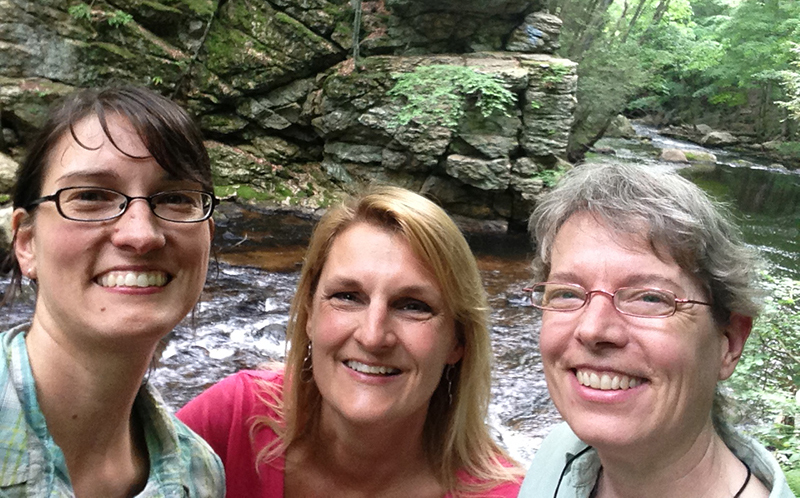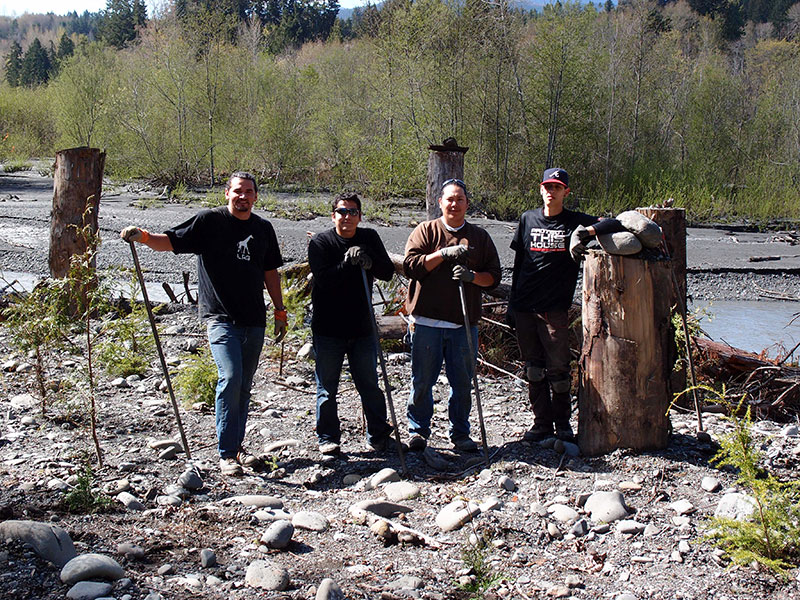River networks make up Earth’s circulatory system. From the tiniest of capillaries, in the form of small creeks and streams, to the major arteries of grand rivers, they store, transport, and distribute organic material, nutrients, sediment, and of course the planet’s very lifeblood—clean water. They provide vital services to innumerable living things, including us humans.

Free-flowing rivers and their valleys serve as critical habitat to both aquatic and terrestrial wildlife, including anadromous and catadromous fish who must travel their channels in order to reproduce. The heartbeat of a river system is its flow, and as with a blood vessel, when that flow is altered or blocked, the system is impacted in ways that can be lethal.

Atlantic salmon (Salmo salar) attempting to move upstream to spawn. Shrewsbury Weir on the River Severn, Shropshire, England. Photo by Kevin Wells Photography, Shutterstock.com
According to a 2019 study published in the journal Nature (Grill et al. 2019) more than 60,000 large dams currently block the flow of the world’s rivers. A 2020 study in the same publication (Belletti, B., Garcia de Leaniz, C., Jones, J. et al. 2020) demonstrates that there are at least 1.2 million instream barriers in 36 European countries. As of yet, no one really knows how many smaller dams and impoundments—some of which could be hundreds or even thousands of years old—exist on Earth. While some of these dams are providing human communities with water supply, energy, or flood control, many, many more are no longer serving any purpose and/or pose safety threats. In the U.S., the average age of the more than 91,000 dams that have been inventoried by the U.S. Army Corps of Engineers is 57-years-old. This means that many have not been built to current safety standards. In fact, in the American Society of Civil Engineers 2021 Report Card for America’s Infrastructure, dams earned a grade of D.

Redridge dam, Redridge, MI. Photo by Landy Hatman, Shutterstock
According to fisheries/water resources engineer and world-renowned dam removal expert, Laura Wildman, the idea to remove unsafe and obsolete dams was, as recently as 30 years ago, considered “crazy talk.” But thanks to the efforts of pioneering practitioners, nonprofit organizations, and even political leaders, the world began waking up to the fact that dam removal was not only possible, but one of the fastest, most effective ways to restore a river system. Join us as we explore the fascinating topic of dam removal.

Laura (center) and two of her dam removal heroes and collaborators, Amy Singler of American Rivers (L) and Eileen Fielding of the Farmington River Watershed Association (R)
We’ll begin by chatting with Laura, who offers a unique perspective on the American dam removal movement. We highlight one of the leading forces in that movement, American Rivers. Also in our nonprofit spotlight is the World Fish Migration Foundation, an organization that is rapidly raising global awareness of the very serious topic of fish passage in a way that is genuinely joyful.

Participants in the World Fish Migration Foundation's World Fish Migration Day celebration
Indigenous communities have been and continue to be instrumental in the removal of dams the restoration of fish passage, ecological function, and Tribal sovereignty. In her article “Tribes are leading the way to remove dams and restore ecosystems,” journalist Lindsay VanSomeren discusses the Lower Elwha Klallam Tribe’s successful, decades-long effort to remove dams from and restore the Elwha River, and the implications for other indigenous communities.

A revegetation crew works on the land. Photo by Mike McHenry
When it comes to dam removal and river restoration, are we being too one-dimensional? In our article “Dam Removal in 3D,” Laura and I explore this question and discuss the possibility and promise of applying Stage 0 river restoration to dam removal.

South Fork McKenzie River, one year after Stage 0 restoration, at base flow ©Kate Meyer
In his article “Balancing Acts: When dam removal is not an option,” journalist Daniel Allen reports on a hydropower dam in central France, where major modifications are being made to better balance the benefits of energy production with those of a functioning ecosystem. Allen also discussed the application of adaptive management to remove, downsize, or mitigate various types of barriers on rivers in another article “Adaptive Management for Barriers Big and Small.”

River Beris, regional park Brazuole Lithuania ©Karolina Gurjazkaité
“Nothing leads to success like success,” writes Jason Kahn, a board member of The Rewilding Institute, who shares some “Dam Removal Successes” from the U.S.. Brad Meiklejohn, who directed The Conservation Fund’s work in Alaska for 25 years, shares the story of one such success—the removal of Lower Eklutna River—in his article “Facing the Challenges of Dam Removal in Alaska.”
Piotr Parasiewicz of Poland’s Stanislaw Sakowicz Inland Fisheries Institute discusses the implications of a changing climate for the construction, management, and removal of European dams in his article “The Climate Conundrum.”

The Lower Eklutna Dam under construction ©The Conservation Fund
We share the reviews of two powerful documentaries on the subject of dams. The Balkan Peninsula is home to Europe’s last remaining wild rivers, collectively known as the “blue heart of Europe.” But these rivers are currently under threat, as 2,796 hydropower plants are planned for the region. Senior ecologist Susan Sherrod reviews “Blue Heart,” a film that documents the efforts of local activists to save these treasured rivers. Senior water resources engineer, Meghan Gloyd, reviews “DamNation,” a film that explores the sea change in America’s attitude from pride in engineering wonders to the growing awareness that our own future is bound to the life and health of our rivers.

A scene from DamNation. Photo by Travis Rummel
The Glossary and Resources section of Leaf Litter offers information and links for those seeking a deeper dive into this topic. We also share New Tools for Mending Rivers, which are provided by the Adaptive Management of European Rivers (AMBER) project. We’ll also get you caught up on the latest news from Biohabitats.

Biohabitats worked with Geauga Park District to restore Beaver Creek in Munson Township, OH ©David Ike Photography
In the U.S. alone, nearly 1,500 dams have been removed in the last 30 years, but we are still in the early days of dam removal. Evidence of calcification has been found in the arteries of 3500-year-old mummies. Yet physician William Harvey did not discover the heart’s circulatory system in the 1600s, and surgical procedures to clear carotid arteries were not performed until 1953. The term “ecology” did not even exist until 1866. Our understanding of river systems and the impacts of dams upon them is constantly growing, as is awareness of the benefits of removing dams that no longer make sense. Will history look back upon the early 21st century as the era when the dam broke on global attitudes and actions toward dam removal? As fish and function return to river reaches once blocked by dams, it certainly seems so.

Spawning sockeye salmon ((Oncorhynchus nerka) in the Adams River, British Columbia. Photo by Beat J. Korner, Shutterstock.com

